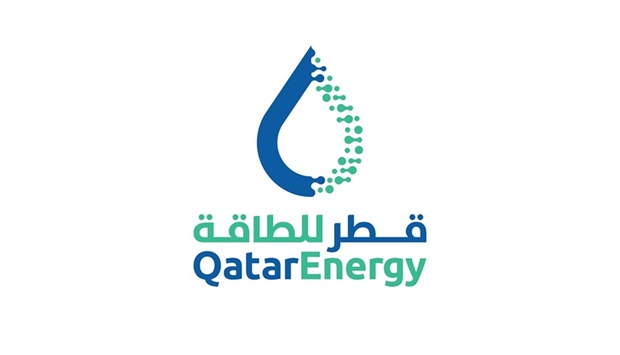Global liquefaction capacity reached 459.9mn tonnes per year (mtpy) in 2021 IGU said in its ‘World LNG Report 2022’.
Besides Qatar, the following LNG exporting markets also achieved utilisation rates of more than 90% in 2021 – Papua New Guinea, Russia, United Arab Emirates, United States, Oman, and Australia.
As of April 2022, there were 21 markets with operational LNG export facilities. Australia continues to be the market with the largest operational capacity with 87.6 mtpy, followed by the United States, which overtook Qatar with an operational capacity of 86.1 mtpy.
Qatar’s operational capacity stood at 77.1 mtpy.
The United States increased its total operational capacity by 25% from 69.1 mtpy at the end of 2020 to 86.1 mtpy in April 2022. This was mainly contributed by the start-up of Corpus Christi T3 (4.5 mtpy), Sabine Pass T6 (5.0 mtpy) and most recently in March 2022, part of the Calcasieu Pass LNG T1-T12 (7.5 mtpy).
The remaining six trains of the Calcasieu Pass LNG T13-T18 (3.8 mtpy) is set to come online by the end of 2022, which will eventually make the United States the market with the largest operational liquefaction capacity.
The top three LNG export markets currently represent more than half of the global liquefaction capacity.
The US was one of the main beneficiaries of the strong demand for LNG last year, IGU said.
Utilisation in the US increased from 76.5% in 2020 to 103.4% in 2021, representing a 50% increase in US LNG exports. This was primarily driven by strong netbacks due to high prices in end-user markets in Europe, Asia, and Asia Pacific, which incentivised full dispatch from US LNG export terminals in 2021.
In the last quarter of 2021, US LNG exports to Europe increased due to low natural gas storage inventories in Europe, sending spot prices for natural gas soaring.
As Europe continues to struggle to implement the policy to replace Russian gas following the Russia-Ukraine conflict, more attention has been placed on US LNG to fill the void.
Similarly, liquefaction facilities in the Middle East have performed above nameplate capacity, with UAE and Qatar operating at an utilisation rate of 107.4% and 103.3%, respectively.
Adgas has made investments to further boost output, while Qatar’s facility remains tied up in long-term oil-linked contracts with Asian buyers, which have likely maximised contractual offtake to reduce exposure to the record-high prices in the spot market, IGU noted.
As of April 2022, 138.5 mtpy of liquefaction capacity was under construction or approved for development, of which approximately 25% is located in Russia.
In 2021, 50mtpy of liquefaction capacity was approved. This was mainly contributed by the Qatargas North Field East (NFE) project that was approved in February 2021, adding 32mtpy to global approved liquefaction capacity, IGU said.
Besides Qatar, the following LNG exporting markets also achieved utilisation rates of more than 90% in 2021 – Papua New Guinea, Russia, United Arab Emirates, United States, Oman, and Australia.
As of April 2022, there were 21 markets with operational LNG export facilities. Australia continues to be the market with the largest operational capacity with 87.6 mtpy, followed by the United States, which overtook Qatar with an operational capacity of 86.1 mtpy.
Qatar’s operational capacity stood at 77.1 mtpy.
The United States increased its total operational capacity by 25% from 69.1 mtpy at the end of 2020 to 86.1 mtpy in April 2022. This was mainly contributed by the start-up of Corpus Christi T3 (4.5 mtpy), Sabine Pass T6 (5.0 mtpy) and most recently in March 2022, part of the Calcasieu Pass LNG T1-T12 (7.5 mtpy).
The remaining six trains of the Calcasieu Pass LNG T13-T18 (3.8 mtpy) is set to come online by the end of 2022, which will eventually make the United States the market with the largest operational liquefaction capacity.
The top three LNG export markets currently represent more than half of the global liquefaction capacity.
The US was one of the main beneficiaries of the strong demand for LNG last year, IGU said.
Utilisation in the US increased from 76.5% in 2020 to 103.4% in 2021, representing a 50% increase in US LNG exports. This was primarily driven by strong netbacks due to high prices in end-user markets in Europe, Asia, and Asia Pacific, which incentivised full dispatch from US LNG export terminals in 2021.
In the last quarter of 2021, US LNG exports to Europe increased due to low natural gas storage inventories in Europe, sending spot prices for natural gas soaring.
As Europe continues to struggle to implement the policy to replace Russian gas following the Russia-Ukraine conflict, more attention has been placed on US LNG to fill the void.
Similarly, liquefaction facilities in the Middle East have performed above nameplate capacity, with UAE and Qatar operating at an utilisation rate of 107.4% and 103.3%, respectively.
Adgas has made investments to further boost output, while Qatar’s facility remains tied up in long-term oil-linked contracts with Asian buyers, which have likely maximised contractual offtake to reduce exposure to the record-high prices in the spot market, IGU noted.
As of April 2022, 138.5 mtpy of liquefaction capacity was under construction or approved for development, of which approximately 25% is located in Russia.
In 2021, 50mtpy of liquefaction capacity was approved. This was mainly contributed by the Qatargas North Field East (NFE) project that was approved in February 2021, adding 32mtpy to global approved liquefaction capacity, IGU said.


